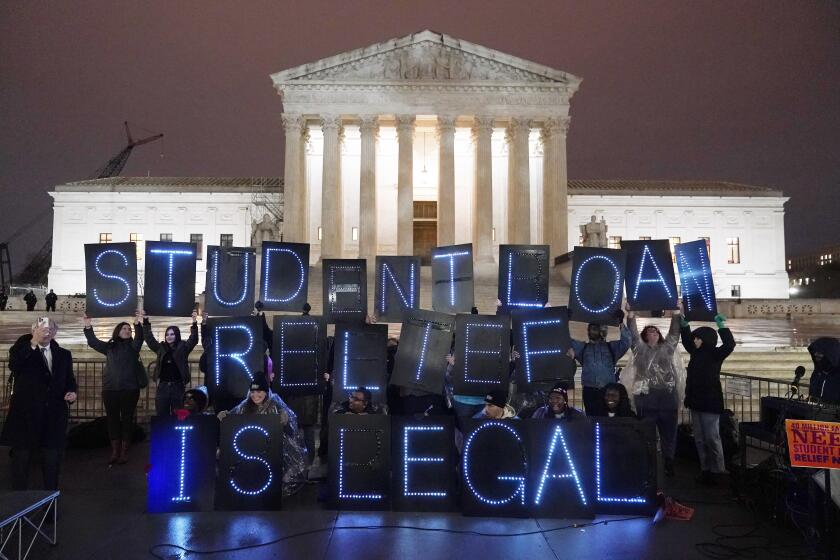A Blob That Eats Kids
I rarely attend principals’ meetings anymore; I just can’t bear to see my colleagues’ frustration. Yes, we do have many good principals, teachers and administrators. These individuals are passionate about children, and yet they are trapped in what I call a blob -- a bloated and politicized school system. The blob dictates each detail of school life, from the core curriculum to the lunchroom menu, for 959 schools and centers and more than 700,000 students. Here are some of those details:
* “Norm control” means a school must move students around to different classrooms, even if this means disrupting their lessons, to meet inflexible teacher-student ratios.
* “Compliance control” means teachers and principals must complete volumes of paperwork to show that schools have complied with bureaucratic rules, using time that should be spent helping children learn.
* “Position control” means schools must crack mysterious codes assigned to employees to find out who is working where and what they’re supposed to be doing. This is a function of the fact that the Los Angeles Unified School District has so many employees it sometimes can’t account for them all.
* “Purchasing control” means that school staff must memorize and apply a 22-digit numeric system to each item ordered. This is the kind of bureaucratic idiocy that can make a straight line between two points feel like a maze.
For most LAUSD teachers, overcrowded campuses, year-round schedules, large class sizes, lack of planning and thinking time, centralized mandates and inadequate resources make life in the trenches a daily struggle. Schools have rigorous learning standards, but many students do not have enough good opportunities to learn. Parents want to be actively involved, but they cannot break into the bureaucratic decision-making process.
The blob continues to creep along, growing bigger and bigger on its endless path.
So can public schools ever get the blob off their backs? Yes, they can, through local control. It can be done by establishing independent “charter school districts” serving from a few hundred to 20,000 students; seven such districts already are operating elsewhere in California. Charter districts -- perhaps 30 of which could make up what is now L.A. Unified -- could create fundamental structural reform in the way schools function. Decision-making and fiscal resources stay with the local communities. They are free from most laws governing school districts.
In 2000, Cal State L.A. compared student achievement in 93 charter schools and 6,520 conventional public schools over a three-year period, using California Academic Performance Index data. The study found that charter schools were doing a better job of improving the academic performance of low-income students.
Two years ago, I discussed with two L.A. Unified board members the possibility of converting some of our high school clusters into charter school districts, especially in high-poverty areas. One of them, board President Caprice Young, was defeated at the polls Tuesday; the other was David Tokofsky, who awaits a final vote count to find out whether he will face a runoff. Regardless, the idea can go forward. Little galaxies formed by one or two high schools and the satellites of middle and elementary schools could become districts.
For instance, San Fernando High School, Maclay Middle School, San Fernando Middle School and 14 elementary schools could form a district serving 23,000 students in the northeast Valley. It would have its own governing body, near and accountable to parents. Central office staff would be minimized, as charter districts are exempt from many state mandates. The charter district would serve the same students and families; magnet programs and transportation for overcrowding would continue.
Though L.A. Unified is operating with federal, state and local appropriations of about $10,000 per student, the charter district would get $6,700 per student. That would be enough because efficiency reduces costs. Independent charter schools within the L.A. district, such as Vaughn and Fenton Avenue, have shown that they can use their resources effectively. These schools support teaching and learning by reducing class size, maintaining a longer school day and longer school year, providing access to technology and building new schools.
Is there a function for the blob? Yes; utilizing the remaining resources and bond funds, it would handle a few systemwide needs such as transportation and facilities. Breaking up need not be that hard to do.
More to Read
Sign up for Essential California
The most important California stories and recommendations in your inbox every morning.
You may occasionally receive promotional content from the Los Angeles Times.






